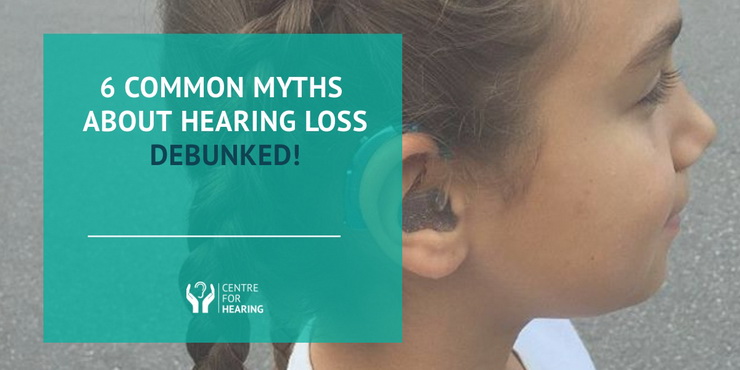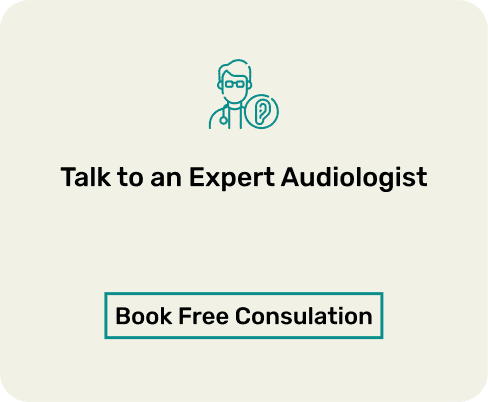Hearing loss comes with many misconceptions. Fear and lack of knowledge prevent many people from getting the hearing help they need. But the fact of the matter is that hearing loss if left untreated, can wreak havoc in an individual’s personal and professional life.
For a person suffering from hearing loss, nothing could be more important than educating himself/herself about hearing loss. The first step is to quell the many myths that stop affected individuals from seeking treatment and avoiding wearing hearing aids or such other devices. Let’s look at some of the most common ones.
Busting Common Hearing Loss Myths
Here are some of the common myths that stop people suffering from hearing loss, from accepting it and seeking solutions.
Myth #1: Hearing aids are always visible.
Fact:
Only certain kinds of hearing aids such as BTE devices can be seen. Many latest BTE devices are small and can be tucked discreetly behind the ear. Different machines are made using different styles, depending on the type and degree of the hearing problem.
Some hearing aids such as CIC and ITC hearing aids remain invisible when worn. They are also available in stealth designs, so no one even has to know you are wearing one.

Myth #2: Only elderly people wear hearing aids.
Fact:
This is one of the most common, and probably the most irksome of all myths. Gone are those days when you only found elderly people wearing large hearing aids. Hearing loss is not just an age-related illness. There are a lot of factors that contribute to hearing loss. While there is a statistical relationship between age-related illnesses and hearing loss, association doesn’t necessarily equate to causation.
According to a study by WHO, 1.1 billion young people (aged between 12-35 years) are at risk of hearing loss due to exposure to noise in recreational settings.
Every year, 7% children are born with a hearing disability.

Myth #3: Wearing hearing aids damages the ear.
Fact:
A hearing aid, when worn following the proper guidance, does not damage the ears. On the contrary, without a hearing aid, the ear with hearing loss begins to get idle as it is stimulated less by outside sounds. This is known as auditory deprivation. If it continues, the damage may affect the other ears too.
So it is important to wear hearing aids on time. However, it must be remembered that a hearing aid does not cure a hearing loss completely, but it can significantly preserve much of your hearing. Today, many hearing assistance devices are compatible with Bluetooth, so they are designed to connect to your phone, tablet or computer just like any audio equipment. Many also have microphones built into them, letting you can talk on the phone hands-free. Here are some innovative hearing aids that offer the latest features in hearing technology.

Myth #4: Hearing aids are too expensive for everyone.
Fact:
Hearing aids are available at a wide range of prices. The range starts at approximately Rs. 15,000 and go up to 3.2 lakhs per ear, depending upon quality, performance, design, features etc. So, it is a wrong conception that all hearing aids are very expensive. There is something for everyone’s pocket, but it is very important to understand the trade-off in selecting a less-costly option vis-a-vis your listening requirement.
However, it is always advisable to spend more on a good quality hearing aid since a higher price suggests better features and the ability to hear as normally as possible. Some people wear only one hearing aid to save money. This is a common misconception. The problem is that you don’t just hear in one ear, so even if your loss is more pronounced on one side, get two hearing aids to localize the sound. It’s just confusing if the hearing on one side sounds different.
Myth #5: Wearing hearing aids makes all sounds equally and uncomfortably loud.
Fact:
This was a problem with the earlier hearing aids, which were based on analog technology. Today’s digital hearing aids have the ability to differentiate between soft and loud sounds, between speech and noise, between low frequency and high-frequency sounds; and further, represent the sound depending on the hearing loss of the individual.
Some models even come with auto-control volume, depending upon the change of listening environments. Besides, many digital hearing aids can reduce the background noise and focus only on the conversation, which makes it easy to participate in day-to-day conversations.
Hearing aids are able to filter out background noises, too. Environmental sounds are a problem for those with a hearing impairment. Something as basic as a fan may block out all other sounds. Hearing aids can filter out that noise, so you hear people talking to you. Many hearing devices come with directional microphones, as well, so those days of trying to figure out where a sound is coming from are over. You just need to choose the best Hearing Aid Suited To Your Condition.

Myth #6: Hearing aids are bulky and boring
Fact:
Hearing aids are now available in sleek designs and are smaller and more sophisticated. In fact, an individual can also opt for practically invisible hearing aids. Also, hearing aids are now stylish enough for everyone, from kids to adults. Modern hearing aids come in brilliant colours and patterns.
Wearing hearing aids are a common and effective treatment for hearing loss, and wearing them can be much less scary than you think. If you are a candidate for hearing aids, make sure you get all the facts and keep an open mind. Hearing aids will always make life better.

With proper knowledge and awareness, the myths around hearing loss and hearing aids can be busted. With the right medical treatment and correct hearing aids, people with hearing loss can lead a normal life again. Don’t strain yourself anymore! At Centre For Hearing, we provide the most comprehensive diagnostic facilities and the latest technology in hearing aids.
Call us on +91 9811227269 for a FREE CONSULTATION!



















